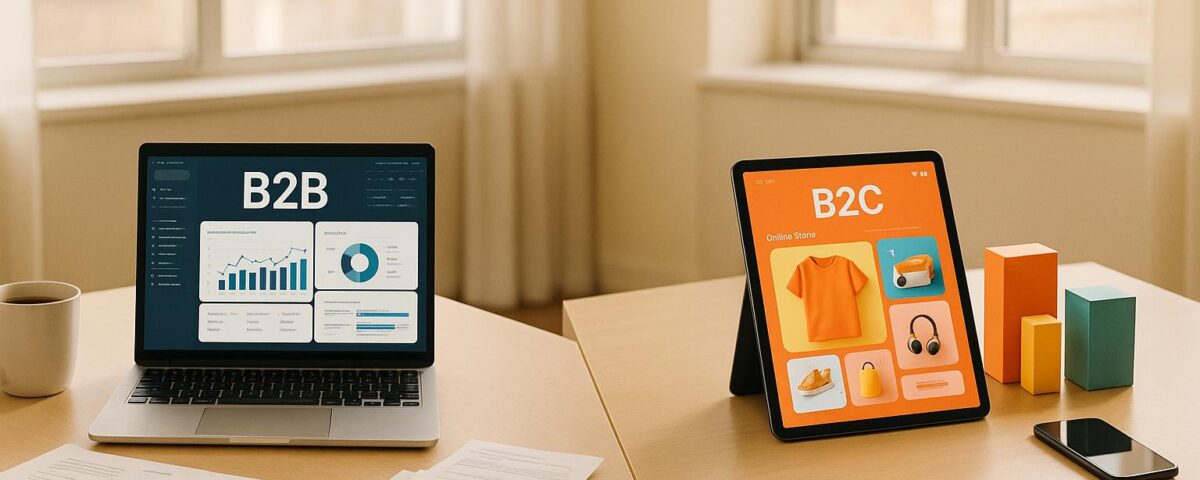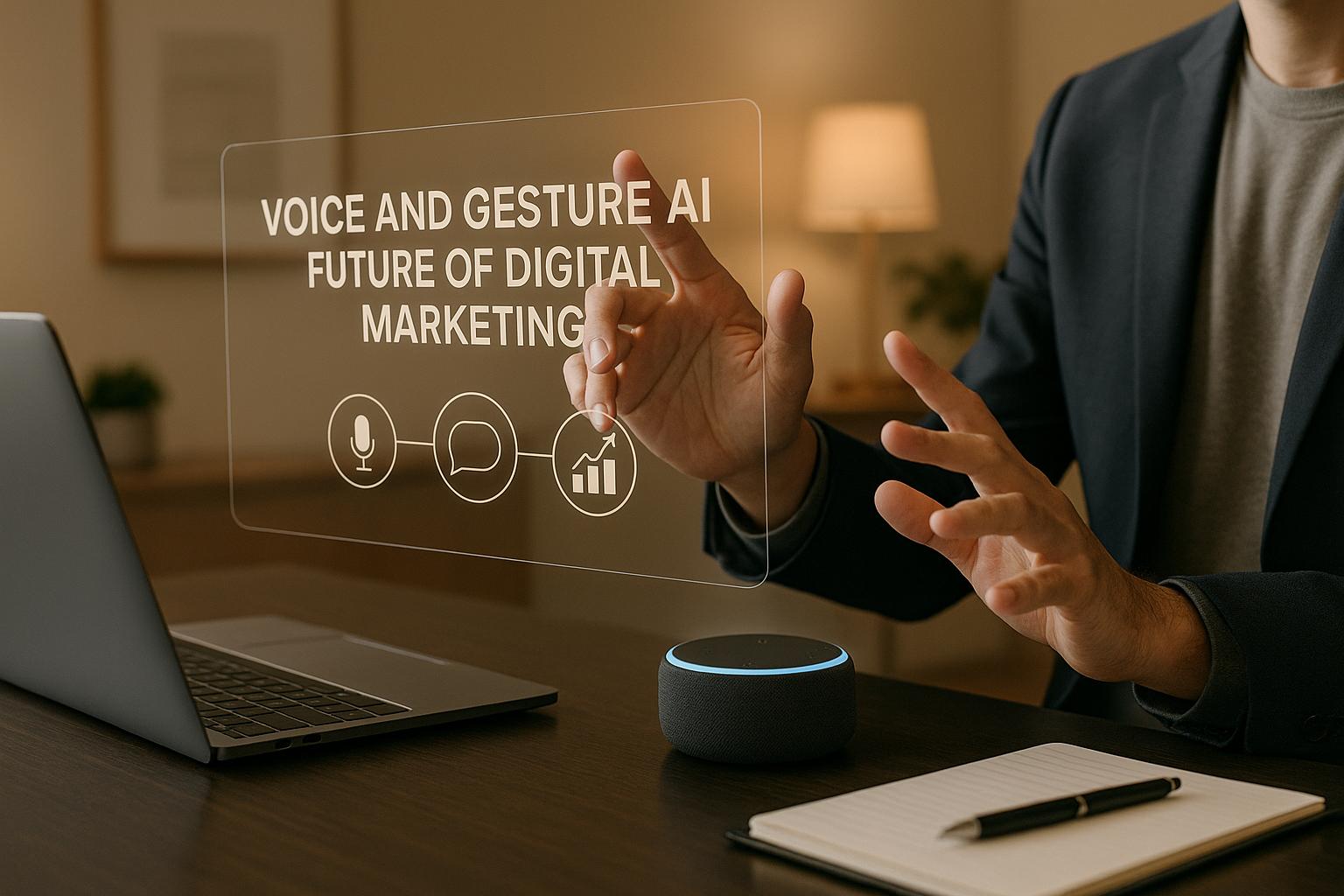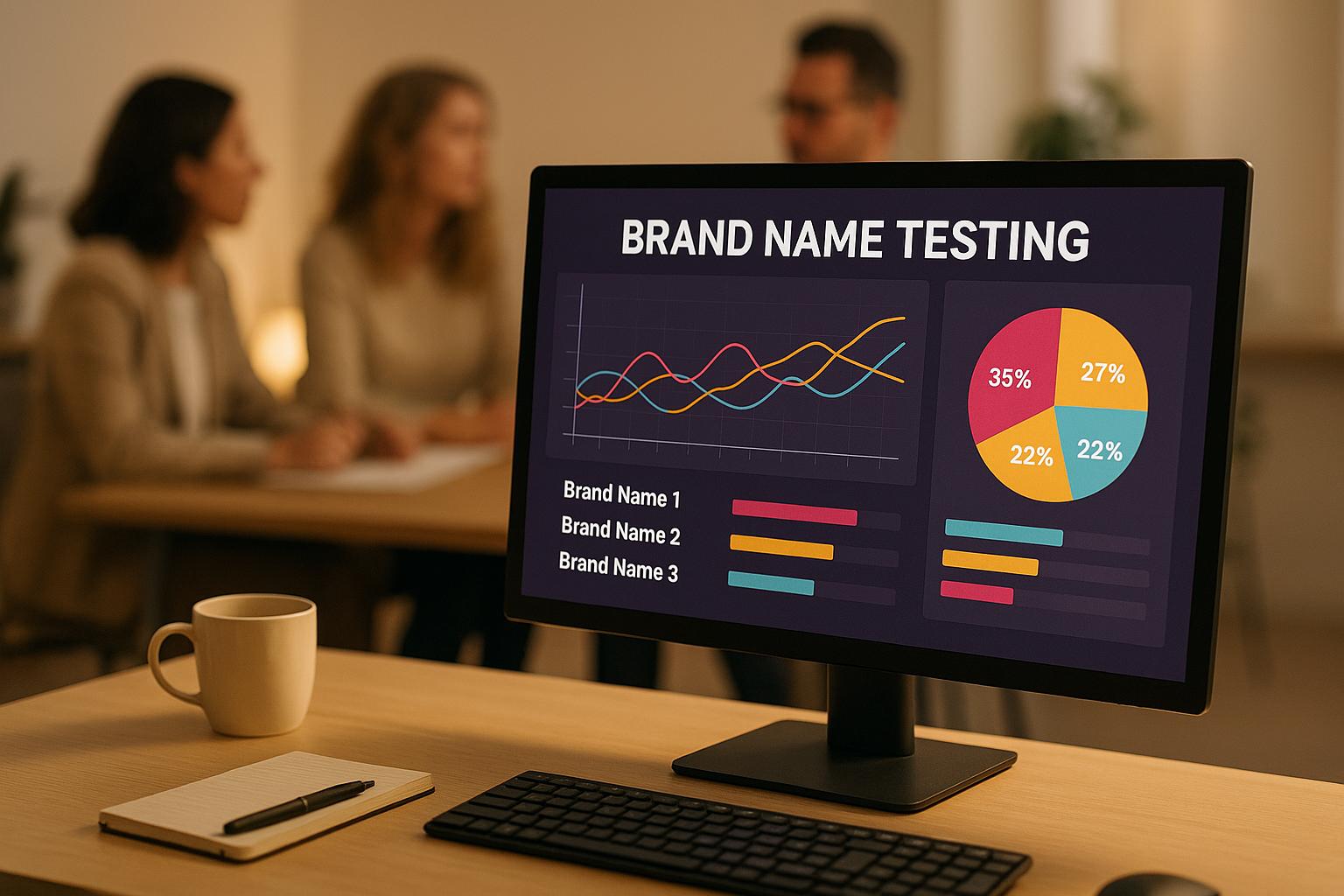Looking for the best automation platform for your business? Whether you’re a B2B or B2C company, the right platform can simplify marketing, boost efficiency, and improve customer engagement. Here’s a quick breakdown of what you need to know:
- B2B Needs: Longer sales cycles, multiple decision-makers, and complex workflows. Look for features like lead scoring, account-based marketing, and in-depth relationship tracking.
- B2C Needs: High transaction volumes, fast decisions, and emotional connections. Prioritize tools for real-time engagement, mass personalization, and quick follow-ups.
- AI-Powered Tools: Both models benefit from AI for automating lead nurturing, email campaigns, and customer support while maintaining a personal touch.
Quick Comparison
| Aspect | B2B Platforms | B2C Platforms |
|---|---|---|
| Sales Cycle | 3–12 months, multi-stakeholder | Minutes to days, single consumer |
| Primary Focus | Relationship building | Transaction volume |
| Content Needs | Technical documents, ROI analysis | Product highlights, emotional appeals |
| Key Features | Lead scoring, account-based marketing | Real-time engagement, mass personalization |
| Data Focus | Company-level metrics, buying signals | Individual consumer behavior |
| Integration Priority | CRM, ERP systems | E-commerce platforms, social media |
Pro Tip: Match the platform’s features to your business model, ensure it integrates with your tools, and choose one that scales with your growth. Ready to dive deeper? Let’s explore the details.
Difference Between B2B and B2C Marketing Automation
B2B vs B2C Automation Requirements
The way B2B and B2C businesses operate creates unique automation needs, which play a key role in choosing the right platform.
Sales Cycles and Decision Making
The sales processes for B2B and B2C businesses differ significantly, requiring platforms with tailored automation features. B2B sales cycles are longer and involve multiple decision-makers, while B2C transactions are often quick and involve a single consumer. Here’s how their needs compare:
| Aspect | B2B Requirements | B2C Requirements |
|---|---|---|
| Sales Duration | 3–12 months average cycle | Minutes to days |
| Decision Makers | 6–10 stakeholders | Single consumer |
| Content Needs | Technical documentation, case studies, ROI analysis | Product descriptions, reviews, emotional appeals |
| Follow-up Process | Structured nurturing sequences | Quick promotional campaigns |
B2B platforms often need features like lead scoring and account-based marketing to handle these complex cycles. On the other hand, B2C platforms prioritize tools for rapid responses and quick conversions. These differences in sales dynamics also influence how businesses communicate with their customers.
Customer Communication Methods
The communication strategies for B2B and B2C businesses are shaped by their unique audience needs. Automation powered by AI has revolutionized how these interactions are managed, making it easier to cater to both models.
For B2B, communication typically involves:
- Sharing in-depth technical content
- Running multi-touch engagement campaigns
- Sending personalized, account-based messages
- Automating scheduled follow-ups
In contrast, B2C communication focuses on:
- Fast response times
- Large-scale personalization
- Creating emotional connections
- Real-time customer engagement
AI can now handle up to 80% of content strategy tasks [1], allowing businesses to maintain consistent communication across channels while still delivering the personal touch that customers value.
The ideal platform balances efficiency with relationship-building. For B2B, this might mean tracking detailed activity logs and managing complex approvals. For B2C, it’s about scaling personalized interactions without losing that human connection. A well-chosen platform integrates these capabilities seamlessly into your workflows, supporting your growth and helping you meet your customers’ expectations. These communication strategies also highlight the core features to look for in an automation platform.
Core Platform Features for B2B and B2C
Lead Tracking and Customer Groups
Managing relationships in B2B and B2C settings requires tailored strategies, and AI-powered automation has made this process far more efficient. It simplifies the handling of complex networks and ensures businesses can operate at scale without losing track of critical details.
| Feature Type | B2B Platform Focus | B2C Platform Focus |
|---|---|---|
| Customer Tracking | Account-based marketing, company hierarchies | Individual consumer profiles |
| Segmentation | Industry, company size, decision stage | Demographics, behavior, purchase history |
| Lead Scoring | Multi-stakeholder engagement metrics | Individual engagement and purchase intent |
| Contact Management | Relationship mapping, stakeholder roles | Purchase history, preference tracking |
AI-driven tools now handle much of the heavy lifting in lead tracking and customer segmentation. They maintain detailed records, ensuring businesses can focus on building meaningful relationships rather than getting bogged down in data management.
Marketing Campaign Structure
Once leads are tracked, the next step is designing campaigns that align with your business model’s customer journey. For B2B platforms, this often means creating long-term nurture sequences. Meanwhile, B2C platforms thrive on quick, engaging interactions that drive immediate action.
"The AI-driven automation setup saves us hours every week. It’s been a total game-changer." – Marianne A., Founder, Kinki Swim
Here’s a breakdown of how campaign features differ between B2B and B2C:
| Campaign Element | B2B Implementation | B2C Implementation |
|---|---|---|
| Timeline Management | Multi-month nurture tracks | Short-term promotional cycles |
| Content Delivery | Technical documentation, ROI analysis | Product highlights, promotional offers |
| Response Handling | Scheduled follow-up sequences | Real-time engagement triggers |
| Performance Metrics | Account progression tracking | Conversion rate optimization |
AI-powered platforms streamline essential campaign tasks like lead nurturing, email sequencing, content scheduling, and customer support. By automating these processes, businesses can maintain consistent communication and tailor their messaging to match customer behavior and preferences.
Additionally, modern tools often include advanced features like intelligent keyword research and automated campaign optimization. These capabilities not only improve campaign performance but also save teams countless hours of manual effort.
Data Systems and Tool Connection
Data Types and Measurement
Modern automation platforms handle a variety of data sets, each tailored to the specific needs of a business. For B2B platforms, the focus is on company-level metrics and buying signals, while B2C systems concentrate on individual consumer behavior and preferences.
| Data Aspect | B2B Requirements | B2C Requirements |
|---|---|---|
| Primary Data Focus | Company-level metrics and buying signals | Purchase history and browsing behavior |
| Analytics Depth | Account-level performance analysis | Detailed evaluation of individual behavior |
| AI Implementation | Predictive lead scoring and account mapping | Product recommendations and cart management |
| Data Storage | Long-term relationship tracking | High-volume transaction processing |
AI tools play an essential role in uncovering patterns and trends within this data. For instance, My Rich Brand uses AI to analyze complex data sets, offering actionable insights without overwhelming users. These insights pave the way for smoother integration with other marketing tools, enhancing overall efficiency.
Software Connections
The integration focus for B2B and B2C platforms varies significantly. B2B systems prioritize robust connections with enterprise-level software like CRM and ERP systems, which are crucial for managing intricate sales cycles and customer relationships. On the other hand, B2C platforms lean toward tools that improve customer-facing interactions, such as e-commerce platforms and social media integrations.
| Integration Type | B2B Priority | B2C Priority |
|---|---|---|
| Core Systems | CRM and ERP systems | E-commerce platforms and POS systems |
| Communication | Sales enablement tools and proposal software | Social media channels and review platforms |
| Analytics | Pipeline tracking and revenue forecasting | Customer lifetime value and conversion rates |
| Security | Enterprise-grade encryption | Secure payment processing and data protection |
When choosing an automation platform, businesses should assess their current tech stack and consider future growth needs. The ideal platform will not only integrate seamlessly with existing systems but also provide the flexibility to incorporate new tools as the business evolves.
sbb-itb-c00c5b1
Growth and Legal Requirements
Managing Business Growth
AI-driven automation takes marketing to the next level by identifying trends and fine-tuning strategies in real time. My Rich Brand offers flexible subscription plans ranging from $299 to $999 per month, designed to grow alongside your business. This setup ensures that your marketing automation keeps pace with increasing demands, seamlessly building on earlier strategies. However, as your business expands, staying on top of legal compliance becomes just as important as scaling your operations.
Legal and Industry Rules
The best platforms don’t just focus on automation – they also prioritize strong legal protections. Features like data security, encrypted communications, and compliance tools are essential for safeguarding your business. These protections not only uphold your company’s reputation but also ensure you’re meeting industry regulations. With these safeguards in place, you can focus on growth without worrying about falling short of legal standards.
How to Pick Your Platform
Matching Features to Business Needs
Choosing the right automation platform is all about aligning its features with your business operations and growth goals. AI tools can take over repetitive tasks and quickly identify trends, helping you refine strategies faster. When evaluating platforms, prioritize features that align with your workflow and can grow with your business.
Take My Rich Brand’s success stories as an example. Cloud Nine Creators saw a noticeable boost after integrating a chatbot and automated email system. Founder Kathleen F. shared, "The chatbot and automated email follow-ups work together to drive sales" [1].
Here’s a quick breakdown of key business needs and the platform features to look for:
| Business Need | Essential Platform Features |
|---|---|
| Lead Generation | AI-powered lead scoring, contact segmentation |
| Customer Communication | Automated email campaigns, chatbot integration |
| Campaign Management | Content scheduling, performance tracking |
| Data Analysis | Real-time trend spotting, ROI measurement |
| Growth Support | Scalable infrastructure, flexible pricing |
Setup and Training Steps
Once you’ve identified the right features, the next step is setting up the system and training your team. A phased approach works best to ensure a smooth transition. Grace Events offers a great example: after redesigning their website and implementing automation tools, they saw a jump in corporate bookings with less manual effort. Owner Mwika K. described the experience, saying, "The value was unmatched and made Grace Events feel like a premium brand online" [1].
To get the most out of your platform, follow these steps:
- Start with core features: Focus on automating essential tasks first to address immediate needs.
- Train your team gradually: Begin with the basics and introduce advanced tools as your team becomes more comfortable.
- Monitor performance: Keep an eye on how the automations perform and tweak settings based on results.
- Scale strategically: Expand your automation efforts in step with your business growth.
The key is blending AI-driven efficiency with human insight, ensuring your marketing stays both effective and emotionally resonant.
Conclusion
Picking the right automation platform can make or break success for both B2B and B2C businesses. For B2B, it’s all about handling longer sales cycles and intricate decision-making. On the other hand, B2C companies need tools that cater to fast transactions and wide-reaching communication strategies.
AI-driven automation has reshaped how businesses tackle marketing tasks like lead nurturing and customer support. It allows companies to keep interactions personal while scaling operations efficiently.
To make automation work for you, focus on these key factors:
- Platform Fit: Ensure the platform aligns with your sales cycle, communication style, and data needs.
- Growth Potential: Opt for a solution that scales with your business, handling more automation without losing performance.
- Seamless Integration: Look for tools that easily connect with what you already use and can adapt as your tech stack evolves.
FAQs
How can I decide if my business needs a B2B or B2C marketing automation platform?
Choosing between a B2B and B2C marketing automation platform comes down to understanding your business model and the type of customers you serve.
B2B platforms are built to handle longer sales cycles and focus heavily on nurturing leads and building relationships. They often include tools like email campaigns, account-based marketing features, and seamless CRM integrations to support these goals.
In contrast, B2C platforms are tailored for shorter sales cycles and aim to engage large volumes of individual customers. These platforms typically offer features like personalized messaging, e-commerce integrations, and real-time analytics to drive quick and frequent interactions.
When deciding which platform works best, think about your customer journey, sales process, and overall marketing objectives. If your business involves selling to other companies with complex buying decisions, a B2B platform is likely the better choice. However, if your focus is on reaching individual consumers and encouraging fast purchase decisions, a B2C platform will probably meet your needs more effectively.
What essential AI-powered features should B2B and B2C businesses prioritize in a marketing automation platform?
When choosing a marketing automation platform, businesses – whether B2B or B2C – should prioritize AI-powered tools that boost productivity and deliver impactful results. Here are some standout features to consider:
- AI-driven SEO to enhance website visibility and improve search engine rankings.
- AI-enhanced advertising tools for smarter audience targeting and efficient budget management.
- AI-powered web design to craft responsive, intuitive, and visually engaging websites.
- AI marketing automation to simplify campaign management, personalize customer experiences, and scale operations with ease.
These capabilities help businesses create data-backed strategies that connect with their audiences and drive real, measurable outcomes.
How can a business choose an automation platform that grows with its needs?
To make sure your automation platform keeps pace with your business’s growth, focus on solutions that can grow alongside you. Look for platforms with scalability, customization capabilities, and the capacity to manage higher data loads and more users as your needs evolve. The best platforms often combine AI-powered tools with human insights, delivering strategies that adapt to your changing goals.
My Rich Brand offers marketing automation solutions designed to scale with businesses of any size. By blending advanced AI technology with personalized strategies, they ensure your unique requirements are met as your business expands.





